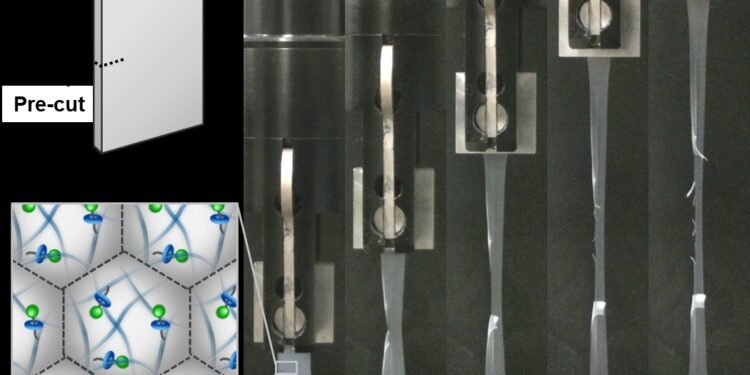The Nanoparticle-based Latex Film is Crack-Resistant, Scientists are using a new technique for combining polymers to create a strong but non-sticky latex film. Synthetic latex films are widely used, but they often contain harmful additives to improve their resistance. In a recent study, Japanese researchers developed a new class of latex films that contain rotaxane-crosslinked acrylic nanoparticles.
These films have remarkable mechanical properties, including good resistance to cracking without any additives, and are easy to recycle, paving the way for other environmentally friendly materials.
Synthetic polymer materials, such as rubber and rubber, have become ubiquitous in our daily lives. Therefore, it is important to ensure that they are good, durable and long-lasting. This is especially true for synthetic latex films, which are often used in packaging, biomedicine and electronics.
But what exactly is synthetic latex film? Simply put, it is a type of nanoparticle-based film that is produced by drying a mixture of polymer nanoparticles and water. As the solvent evaporates, the nanoparticles become more compact until finally the interaction between the polymer chains and the nanoparticle mass forms a cohesive film.
Unfortunately, latex films produced in this way are weak. In most cases, organic solvents and fillers will be added to the first mixture to improve the properties of the final product. These additives are not only expensive but also harmful to the environment.
Fortunately, a group of researchers in Japan, led by Professor Daisuke Suzuki of Shinshu University, recently developed a new method to create latex nanoparticle-based films that are resistant to – no use of such attachments. Their work, uploaded June 16, 2023 and published in Volume 39, Issue 26 of Langmuir Journal on July 4, 2023, includes contributions from Yuma Sasaki of Shinshu University and Professor Toshikazu Takata of Hiroshima University.
The key to their approach is a new molecular structure known as a rotaxane, which has two main components: a ring-shaped molecule and a linear “axial” molecule. A ring-shaped molecular chain is used from the molecular axle, which is held tightly due to the shape of the axle end.
The researchers took advantage of this locking mechanism in rotaxane by using a chemical compound that is similar to a ring in one polymer chain and an axle molecule in another chain. Next, they prepared a mixture of water and polymer nanoparticles through standard ultrasonication and subsequent polymerization, which, in turn, was used to create a latex film.
Visual experiments conducted on these films showed that this rotaxane-based strategy produced remarkable results. “Unlike flexible polymers based on nanoparticles, latex films composed of rotaxane-crosslinked nanoparticles showed a unique explosive behavior,” said Dr. Suzuki says. “The direction of crack propagation changes from a direction parallel to the crack to a direction perpendicular to the crack, increasing the shear strength.”
A new method of producing latex films offers many advantages over traditional methods. Most importantly, no toxic additives are necessary to achieve a reasonably strong film. Additionally, since only a small amount of rotaxane is required, the thickness of the film can be kept flexible. The latex film provided is also durable.
“They are biodegradable and can be easily dispersed into individual nanoparticles by placing them in an environmentally friendly organic solvent, such as a hot water ethanol solution, “Dr. Suzuki explains. “These nanoparticles can change the film during the evaporation of the solution. The results of this research can thus help create sustainable and replicable products.
Overall, the team hopes that their work will expand the possibilities for creating new polymer films without additives. Such materials can make it compatible, with potential applications in biotechnology and medicine in addition to packaging, industrial coatings and adhesives.
We hope that a future full of such eco-friendly products will be produced soon!
Source: Shinshu University





































